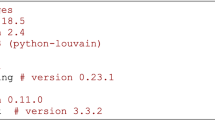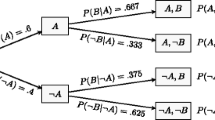Abstract
Spectral measures of causality are used to explore the role of different rhythms in the causal connectivity between brain regions. We study several spectral measures related to Granger causality, comprising the bivariate and conditional Geweke measures, the directed transfer function, and the partial directed coherence. We derive the formulation of dependence and causality in the spectral domain from the more general formulation in the information-theory framework. We argue that the transfer entropy, the most general measure derived from the concept of Granger causality, lacks a spectral representation in terms of only the processes associated with the recorded signals. For all the spectral measures we show how they are related to mutual information rates when explicitly considering the parametric autoregressive representation of the processes. In this way we express the conditional Geweke spectral measure in terms of a multiple coherence involving innovation variables inherent to the autoregressive representation. We also link partial directed coherence with Sims’ criterion of causality. Given our results, we discuss the causal interpretation of the spectral measures related to Granger causality and stress the necessity to explicitly consider their specific formulation based on modeling the signals as linear Gaussian stationary autoregressive processes.
Similar content being viewed by others
References
Amblard PO, Michel O (2011) On directed information theory and Granger causality graphs. J Comput Neurosci 30(1): 7–16
Baccalá L, Sameshima K (2001) Partial directed coherence: a new concept in neural structure determination. Biol Cybern 84(1): 463–474
Baccalá L, Sameshima K, Ballester G, Do Valle A, Timo-Iaria C (1999) Studying the interaction between brain structures via directed coherence and Granger causality. Appl Signal Process 5: 40–48
Barnett L, Barrett AB, Seth AK (2009) Granger causality and transfer entropy are equivalent for Gaussian variables. Phys Rev Lett 103(23): 238701
Bernasconi C, König P (1999) On the directionality of cortical interactions studied by structural analysis of electrophysiological recordings. Biol Cybern 81(3): 199–210
Bernasconi C, von Stein A, Chiang C, König P (2000) Bi-directional interactions between visual areas in the awake behaving cat. Neuroreport 11(4): 689–692
Besserve M, Schoelkopf B, Logothetis NK, Panzeri S (2010) Causal relationships between frequency bands of extracellular signals in visual cortex revealed by an information theoretic analysis. J Comput Neurosci 29(3): 547–566
Bressler SL, Seth AK (2011) Wiener Granger causality: a well established methodology. Neuroimage 58(2): 323–329
Bressler SL, Richter CG, Chen Y, Ding M (2007) Cortical functional network organization from autoregressive modeling of local field potential oscillations. Stat Med 26(21): 3875–3885
Bressler SL, Tang W, Sylvester CM, Shulman GL, Corbetta M (2008) Top-down control of human visual cortex by frontal and parietal cortex in anticipatory visual spatial attention. J Neurosci 28(40): 10056–10061
Brillinger D (1981) Time series. Data analysis and theory. Holden-Day, San Francisco
Brovelli A, Ding M, Ledberg A, Chen Y, Nakamura R, Bressler SL (2004) Beta oscillations in a large-scale sensorimotor cortical network: Directional influences revealed by Granger causality. Proc Natl Acad Sci USA 101: 9849–9854
Buzsáki G (2006) Rhythms of the brain. Oxford University Press, New York
Chamberlain G (1982) The general equivalence of Granger and Sims causality. Econometrica 50(3): 569–581
Chen Y, Bressler S, Ding M (2006) Frequency decomposition of conditional Granger causality and application to multivariate neural field potential data. J Neurosci Methods 150(2): 228–237
Cover TM, Thomas JA (2006) Elements of information theory, 2nd ed. Wiley, New York
Dhamala M, Rangarajan G, Ding M (2008) Estimating Granger causality from fourier and wavelet transforms of time series data. Phys Rev Lett 100(1): 018701
Ding M, Chen Y, Bressler SL (2006) Granger causality: basic theory and application to neuroscience. In: Schelter B, Winterhalder M, Timmer J (eds) Handbook of time series analysis: recent theoretical developments and applications. Weinheim, Wiley-VCH Verlag, pp 437–460
Eichler M (2006) On the evaluation of information flow in multivariate systems by the directed transfer function. Biol Cybern 94(6): 469–482
Florens J (2003) Some technical issues in defining causality. J Econ 112: 127–128
Fries P (2005) A mechanism for cognitive dynamics: neuronal communication through neuronal coherence. Trends Cogn Sci 9(10): 474–480
Friston KJ (1994) Functional and effective connectivity in neuroimaging: a synthesis. Hum Brain Mapp 2(5): 56–78
Gelfand I, Yaglom A (1959) Calculation of the amount of information about a random function contained in another such function. Am Math Soc Transl Ser 2(12): 199–246
Geweke JF (1982) Measurement of linear dependence and feedback between multiple time series. J Am Stat Assoc 77(378): 304–313
Geweke JF (1984) Measures of conditional linear dependence and feedback between time series. J Am Stat Assoc 79(388): 907–915
Gourevitch B, Le Bouquin-Jeannes R, Faucon G (2006) Linear and nonlinear causality between signals: methods, examples and neurophysiological applications. Biol Cybern 95(4): 349–369
Gourieroux C, Monfort A, Renault E (1987) Kullback causality measures. Ann Econ Stat 6/7:369–410
Granger CWJ (1963) Economic processes involving feedback. Inf Control 6: 28–48
Granger CWJ (1980) Testing for causality: a personal viewpoint. J Econ Dyn Control 2(1): 329–352
Guo S, Seth AK, Kendrick KM, Zhou C, Feng J (2008a) Partial Granger causality-eliminating exogenous inputs and latent variables. J Neurosci Methods 172(1): 79–93
Guo S, Wu J, Ding M, Feng J (2008) Uncovering interactions in the frequency domain. PLoS Comput Biol 4(5): e1000087
Kaminski M, Blinowska K (1991) A new method of the description of the information flow in the brain structures. Biol Cybern 65(3): 203–210
Kaminski M, Ding M, Truccolo W, Bressler S (2001) Evaluating causal relations in neural systems: Granger causality, directed transfer function and statistical assessment of significance. Biol Cybern 85(2): 145–157
Kolmogorov A (1939) Sur l’interpolation et extrapolation des suites stationnaires. Comp Rend Acad Sci Paris 208: 2043–2045
Kuersteiner G (2008) Granger-Sims causality. The new palgrave dictionary of economics, 2nd ed. MacMillan, Bedford
Ladroue C, Guo S, Kendrick K, Feng J (2009) Beyond element-wise interactions: identifying complex interactions in biological processes. PLoS ONE 4(9): e6899
Marko H (1973) Bidirectional communication theory–generalization of information-theory. IEEE Trans Commun 12: 1345–1351
Nedungadi AG, Rangarajan G, Jain N, Ding M (2009) Analyzing multiple spike trains with nonparametric Granger causality. J Comput Neurosci 27(1): 55–64
Pereda E, Quian Quiroga R, Bhattacharya J (2005) Nonlinear multivariate analysis of neurophysiological signals. Prog Neurobiol 77: 1–37
Priestley M (1981) Spectral analysis and time series. Academic Press Inc., San Diego
Rissanen J, Wax M (1987) Measures of mutual information and causal dependence between 2 time-series. IEEE Trans Inf Theory 33(4): 598–601
Rozanov YA (1967) Stationary random processes. Holden-Day, San Francisco
Schelter B, Winterhalder M, Eichler M, Peifer M, Hellwig B, Guschlbauer B, Lucking C, Dahlhaus R, Timmer J (2006) Testing for directed influences among neural signals using partial directed coherence. J Neurosci Methods 152(1-2): 210–219
Schreiber T (2000) Measuring information transfer. Phys Rev Lett 85: 461–464
Sims C (1972) Money, income, and causality. Am Econ Rev 62(4): 540–552
Solo V (2008) On causality and mutual information. In: Proceedings of the 47th IEEE conference on decision and control, pp 4939–4944
Takahashi DY, Baccala LA, Sameshima K (2010) Information theoretic interpretation of frequency domain connectivity measures. Biol Cybern 103(6): 463–469
Wiener N (1956) The theory of prediction. In: Beckenbach EF (eds) Modern mathematics for engineers. McGraw-Hill, New York
Winterhalder M, Schelter B, Hesse W, Schwab K, Leistritz L, Klan D, Bauer R, Timmer J, Witte H (2005) Comparison directed of linear signal processing techniques to infer interactions in multivariate neural systems. Signal Process 85(11): 2137–2160
Author information
Authors and Affiliations
Corresponding author
Rights and permissions
About this article
Cite this article
Chicharro, D. On the spectral formulation of Granger causality. Biol Cybern 105, 331–347 (2011). https://doi.org/10.1007/s00422-011-0469-z
Received:
Accepted:
Published:
Issue Date:
DOI: https://doi.org/10.1007/s00422-011-0469-z




